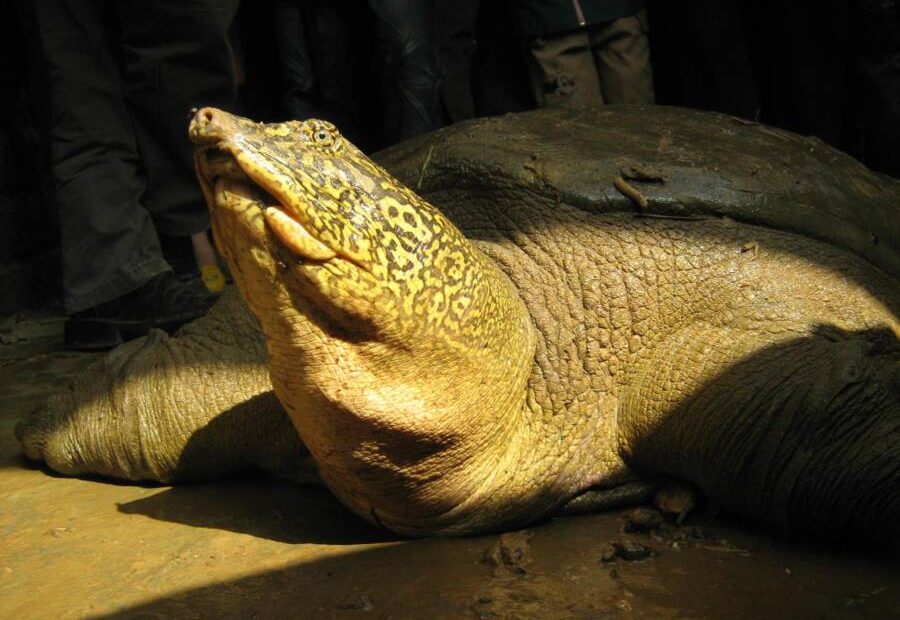The last female Yangtze giant softshell turtle has died, leaving only two known males and driving the species closer to extinction.
The Yangtze giant softshell turtle, Rafetus swinhoei, is the world’s most endangered turtle species. Its population has been dwindling over the years, and now, with the recent discovery of the lifeless body of the last known female, the species’ extinction seems inevitable.
The female turtle’s body was found washed ashore near Đồng Mô Lake in Hanoi, Vietnam. She was likely the last of her kind, as the only other known living members of the species are two males – one in China’s Suzhou Zoo and the other in Hanoi’s Xuân Khanh Lake.
Experts believe that the female turtle had the potential to lay hundreds of eggs each year. Tim McCormack, director of the Asian Turtle Program for Indo-Myanmar Conservation, stated, “She was a large female that obviously has great reproductive capacity. She could have potentially laid a hundred eggs or more a year.”
The decline of the Yangtze giant softshell turtle can be attributed to pollution and the hunting of turtles for their meat and eggs. These factors have driven the species to the brink of extinction.
The loss of this turtle species is especially disheartening in Vietnam, where it holds cultural significance. Known as the Hoàn Kiếm Turtle, the Yangtze giant softshell turtle was once found in Hoàn Kiếm Lake in central Hanoi, a lake named after a 15th-century legend.
According to the legend, the golden turtle god Kim Qui presented a magical sword called Thuận Thiên, or “According to Heaven’s Will,” to the Vietnamese emperor Lê Lợi. This sword granted him immense power, enabling him to fight against the invading Chinese army and bring freedom to Vietnam.
After his victory, Lê Lợi returned the sword to Kim Qui, who then retreated to the bottom of Hoàn Kiếm Lake. In honor of the sword’s return, the lake was renamed “Hoàn Kiếm,” meaning “Lake of the Restored Sword.”
Khoi Pham, the editor of arts and culture magazine Saigoneer, expressed the cultural significance of the Hoàn Kiếm Turtle, stating, “It’s like we have a tangible connection to history right in our backyard, and seeing the turtle alive and kicking makes the legends seem more real and our past victories more validated.”
Since the death of a giant Yangtze softshell turtle known as Cụ Rùa in January 2016, Hoàn Kiếm Lake has been without a Rafetus swinhoei.
Turtles hold a revered place in Vietnamese culture as symbols of longevity, wisdom, and stability. These creatures appear in temples, monuments, and folklore. Khoi Pham lamented, “It’s a shame that, for a country that respects turtle deities so much, we have been doing such a poor job of protecting their real-life counterparts.”
Efforts to save the Yangtze giant softshell turtle have faced significant challenges. While a female turtle was discovered in Hanoi’s Đồng Mô Lake in January 2021, it is still unclear if there are other turtles of this species in the lake. Conservationists remain hopeful but acknowledge the loss of the last female as a blow to their conservation efforts.
The plight of the Yangtze giant softshell turtle reflects the urgent need for conservation efforts to protect endangered species. It serves as a reminder of the consequences of habitat destruction and hunting.
